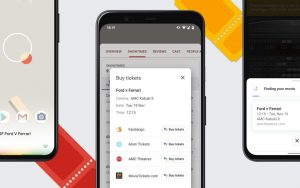An SEO content brief includes all of the information your writers, designers, etc. need to create the content for your SEO strategy. This ensures everything produced achieves the same level of quality and includes all of the key ingredients needed to rank well and engage users.
The brief for each piece of content should include the following:
- Objective: The desired outcome of the content (views, inbound links, subscriptions, etc.).
- Audience: Who the content is being created for.
- Keywords: Primary and secondary keywords to target.
- Topic & angle: The subject being covered and how the topic should be approached.
- Key points: The main points to be covered in the content.
- Content format: The type of content (blog, video, email, etc.), length and any specification requirements (eg: images to include, footage resolution, etc.).
- Structure: An outline of the structure for the piece in question, including headings, keyword placement, word count, etc.
- Voice, style & tone: The stylistic requirements defined by your brand voice.
- Links: Internal and external links to be included in the content.
- Competitor examples: References to take inspiration but also differentiate from and improve upon.
- SEO checklist: A summary of all the on-page optimisation tasks you want content creators to complete.
You (or your agency) should create a brief for each piece of content for writers to follow, making sure that important elements such as target keywords, inbound links and on-page SEO guidelines are followed for every piece.
1. SEO content brief objective
Every piece of content you produce should have a purpose, otherwise what’s the point of investing time and money into it? One piece of content can have multiple objectives and, broadly speaking, there are two types of objective you want to think about:
- Ranking objectives: What you want to achieve in the SERPs with your content.
- User objectives: What you want users to do with your content after engaging with it.
Here are some examples of common ranking objectives:
- Targeting a primary keyword
- Targeting a new keyword opportunity
- Ranking above a competitor’s piece of content
- Showing in featured snippets for a specific keyword
- Building internal links for target keywords
- Updating old content that still generates traffic
When it comes to user objectives, you have to ask yourself: What action do you want users to take when they’re done with your content?
Here are some common examples of user objectives:
- Inbound links: You want reputable websites to link to your content.
- Conversions: You want readers to take action on a CTA.
- Signups: You want users to sign up to your newsletter
- Social shares: You want people to share your content on social media.
- Page visits: You want users to click through to another page.
- Return visits: You want users to continue engaging with your content.
With user objectives, it’s generally better to focus on one specific action, especially if you’re targeting high-value actions, such as conversions. However, it’s perfectly normal to have multiple ranking objectives for one piece of content – eg: building internal links, targeting primary keywords and optimising to show in featured snippets.
2. Define your audience
It is important to have a solid profile of target audiences and buyer personas so that when you’re sending content briefs to writers, it should simply be a case of including the relevant profile in each brief. For example, you might create content for different business sizes, meaning some of your posts are geared towards new micro-business owners while other pieces target decision-makers at larger companies. These two audiences alone require very different types of content – even on the same topic – so it’s vital you address the unique needs of your target audience in every piece.
3. Specify your target keywords
Keywords have the biggest influence on everything you do with SEO content. Your primary keywords determine the topics of each piece, the user intent you have to satisfy and the sub-topics you need to cover.
There are several types of keyword you need to specify for each piece of content:
- Primary keyword: The main keyword you’re targeting, which should be included in your title, subheading and several times in the main body of text.
- Secondary keywords: A list of relevant keywords that should also be included in the main body of the text.
- Keyword variations: Important keyword variations that should be used throughout the piece.
You should clearly specify each type of keyword, including lists for secondary and keyword variations in order of importance and suggestions for how many times each keyword should be included on the page.
4. Topic & angle
Always specify the topic for each piece of content in your brief, even if it’s obvious from the target keywords. You should provide information about the angle you wish to take with the topic and the response you wish to get from your target audience.
Let’s say your company sells energy-efficient heating and you’ve come up with a title along the lines of 10 most energy-efficient heating solutions for your home. Obviously, you want the article to promote your own products but you don’t want it to be obvious to the reader. So you might want to take the angle of recommending products at different price points and listing pros and cons for each option to increase the perceived impartiality of your content.
Specify this angle in your SEO content brief so your content creators know exactly how to approach the topic.
5. Key points to include
Again, try not to leave it up to your writers or content producers to come up with the key points they’re covering. You’re creating content with purpose so why leave room for loss of relevance when you can specify the key points that need covering to strengthen your message?
6. Content format & specifications
This is where you specify the type of content being produced (blog post, video, podcast, etc.) and the specifications, including word counts, media types and anything else important.
Even for a blog post, you can instruct writers on the types of images to include, such as resolution, file size and potential sources. Likewise, you may want to provide instructions for embedded videos or social media posts to ensure they’re of a certain length and recency.
7. Content structure
Structure is one of the most important elements of on-page SEO and you want to make sure creators are optimising content properly. If we’re talking about blog posts, you should include instructions and information about the following:
- Title
- Introduction
- Headings (h2, h3, etc.)
- Bullet points & numbered lists
- Max. word count per paragraph
- Max. word count per heading
- Recommended number of images
- Image optimisation
- Conclusion
- Any other structural elements you require, such as embedded CTAs or web forms.
For example, you might specify a max. word count of 50 words for the first paragraph in the intro of your articles and 150 words for the full introduction before leading into the first h2 heading.
Next, you might encourage a structure of at least three h2 heading sections per article with at least one of those sections including several h3 subheading sections, where appropriate.
8. Voice, style & tone
This may be the same for all of your content but you could define different styles for certain content types, especially if you’re producing content in different formats. For example, you might want to take a slightly more serious tone in your in-depth guides than your regular blog posts and something more casual in videos and podcasts.
There’s no right or wrong here but you should have specific guidelines for your content writers and producers to follow.
9. Internal & external links
Each piece of content you produce should link to other pages on your website (internal links) and pages from other websites (external links). Both types of links should be relevant to the core topic of your content and lead to pages that reinforce your points or lead to more information relevant to the anchor text.
Let’s imagine a company that sells accounting software and it publishes a tutorial on how to automate bookkeeping. The posts should link to relevant pages on the company’s website for important keywords – so it might link to the homepage using the anchor text “accounting software” and feature pages for terms like “VAT returns,” “sending invoices” and “managing payroll”.
The same post should also link out to third-party sites that reinforce key points made in the article. Stats from reputable sources are always a good place to start, such as data from ONS showing how many hours the average company spends on their books or the number of businesses fined for filing tax returns late and incorrectly the previous year.
In your SEO content brief, specify which internal pages you want your writers to link to, including the keyword-optimised anchor text they should use.
Likewise, include any external links you want to include or a list of potential sources where they can find links to reinforce any arguments, claims or subjective commentary.
10. Competitor examples
Competitor content already ranks for the keyword you’re targeting and the aim is to climb above them in the SERPs. So your content producers need to know what they’re up against and what’s required of them to improve upon the content already ranking for your target keyword.
First up, you have to analyse the content you’re looking to beat and find weaknesses that you can exploit. Your aim is to show search engines that your content deserves to rank higher than the competition and, then, back this up with user signals (time on page, pages visits, low bounce rates, etc.) that confirm your content deserves to stay above your rivals.
So your SEO content brief may include the following instructions for your writers:
- 3,000+ word count to provide more depth than the competitor content.
- Include the phrase ‘for small businesses’ in the title as the competitor content is more generalistic.
- Focus on small business challenges to make the piece hyper-relevant to the target audience.
- Up-to-date external links from the previous 12 months (the links in competitor examples are older and less relevant).
- Include more stats than the competitor examples.
- Use a more conversational tone than the competitor examples.
- Include an actionable, step-by-step guide under an h2 subheading using h3 headings for each step with images to illustrate the action and a clear description.
These are the kind of instructions your content producers should be given to ensure they’re creating content that provides Google and other search engines with all the signals they need to rank your page above the competition.
11. SEO checklist
Finally, every SEO content brief should include (or link to) your SEO checklist for writers to run through before they submit or publish their work. This checklist includes all of the on-page essentials, such as titles, headings, basic structure, anchor text and keyword usage – everything you want your content producers to optimise and double-check.
Include any unique requirements that you might have, such as preferred heading structures and a list of priority internal links. Your checklist helps your creatives produce optimised content every time and learn the essential basics of SEO, which will benefit everything else they create for you.
Digital & Social Articles on Business 2 Community
(50)
Report Post






